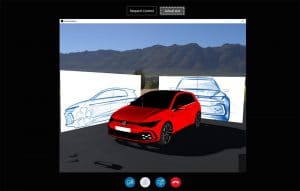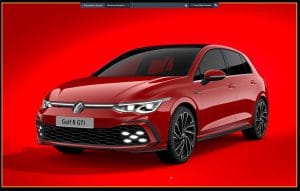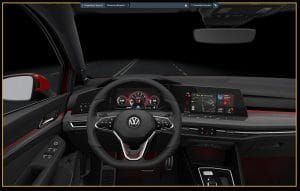Designing a car can be a solitary venture, or so it might seem, however, “Design today is a team play,” said Volkswagen Group Design Executive Director Klaus Bischoff. And nowhere was that more apparent than in the development of the eighth-generation VW Golf.
The GTI version of the ever-popular hatchback was supposed to make its debut at the Geneva Motor Show back in March, an event that became one of the early victims of the coronavirus pandemic. VW did provide a brief webcast preview of the 2021 Golf, but left a number of questions unanswered, something Bischoff and members of the VW team aimed to answer during a longer webinar this week.
The session provided insight not only into the development of the next Golf, but also into the way VW is transforming the design process. While there are still opportunities to sketch an idea out on the back of a napkin, and while final designs still get transformed into clay models, the new process has moved virtually everything else into the virtual realm. That not only helps speed up the product development process but has also made it possible for VW designers to keep working during global coronavirus lockdowns.

The digital design process can be a collaborative one, with stylists around the world contributing simultaneously.
One of the challenges designers face when redesigning classics like the Golf is finding the right balance between the new and the familiar. There are clear “do’s and don’t,” said Bischoff.
The look of the new Golf is familiar, even with a number of notable changes. It adopts a softer, more rounded look, with a sloped nose anchored by a low, crosshatched grille. Slit-like headlamps are linked by a chromed crossbar. A narrow line spans the nose of the hatchback, in red for the GTI, blue for the higher-mileage GTE and GTD models. The sides are more curvaceous than the outgoing GTI and there’s a subtle, coupe-like roll to the hatchback’s roofline.
As with virtually all new VW projects, the GTI was both a collaborative and a competitive event. All told, VW has about 41 designers based in 30 nations, and it sought out a number of possible designs before steadily narrowing it down to a final winner. Working digitally makes that much easier to accomplish, he said, especially with the use of the massive “power wall” at VW headquarters in Wolfsburg, Germany. That wall-sized virtually reality display allows design managers and, eventually, members of the VW Supervisory Board to view their options in virtual reality.
(Volkswagen’s new software aims to eliminate crashes by 2050.)
During an hour-long online presentation, Bischoff showed an accelerated version of the process, taking a preliminary sketch and transforming it into a life-like rendition of the final production Golf GTI.
The process is so effective, “our workflow has been condensed by as much as 1.5 years,” said Bischoff, adding that, “The vision we had (of the GTI) became a reality very quickly.”
Among the advantages of working digitally, the math data behind these renderings can be passed over to engineering where “it can be used simultaneously” for a variety of other things, such as running the design through a virtual wind tunnel while also working on the manufacturing processes.
(VW offers a look at its wooly, all-electric e-BULLI concept.)
With the Golf and most other new products, VW still creates some “hard” models, usually in clay, towards the end of the development process. That helps designers and top management feel confident that they’ve made the right decisions. But, looking forward, VW plans to move almost entirely into the digital realm with tools like the power wall.
That’s the direction VW is taking with its upcoming line-up of ID battery-electric vehicles, Bischoff said, such as the ID.3 and ID.4 models set to come to market in the coming year. He also dropped a tantalizing hint that an all-new – and all-electric – Beetle may be in the works.
“When we laid out the MEB (the modular all-electric) platform, we worked in a very intense and fast way,’ Bischoff explained, adding that, “We proposed a lot of body styles and had a board presentation showing our ideas, then we got the task to put all of them on the road.”
The development of the ID family, he noted, “was the biggest challenge of my career, a lifetime experience.”
(VW turns to cloud computing to cut costs, speed product development.)
Bischoff is a clear fan of digital display technology, and not just for his design work. He said he is “pushing our engineers for new solutions” inside the vehicle. “With the ID family, he suggested, you will see how far we can take HUD (head-up display) technology.”
There’s plenty of work ahead for Bischoff and his team now that the development of the Golf and first ID models are out of the way. The coronavirus has presented some real challenges of its own, however, the design chief noting that “social distancing is a problem” when it comes to product development because “we are used to working in close collaboration.” But the increased reliance on digital design and engineering tools has paid off in unexpected ways.
“We are already used to working even when separated by oceans, so we are very comfortable” working with other designers who may be working off a computer at home.
That said, not everything can be done on a laptop. Some key steps in the design and engineering process require access to supercomputers and large displays like the power wall. So, things will likely get quite busy back at the office when Bischoff and the rest of his team finally get to return to something close to the old normal.



